The minimum wage in every US state in 2025
Who's guaranteeing higher wages?
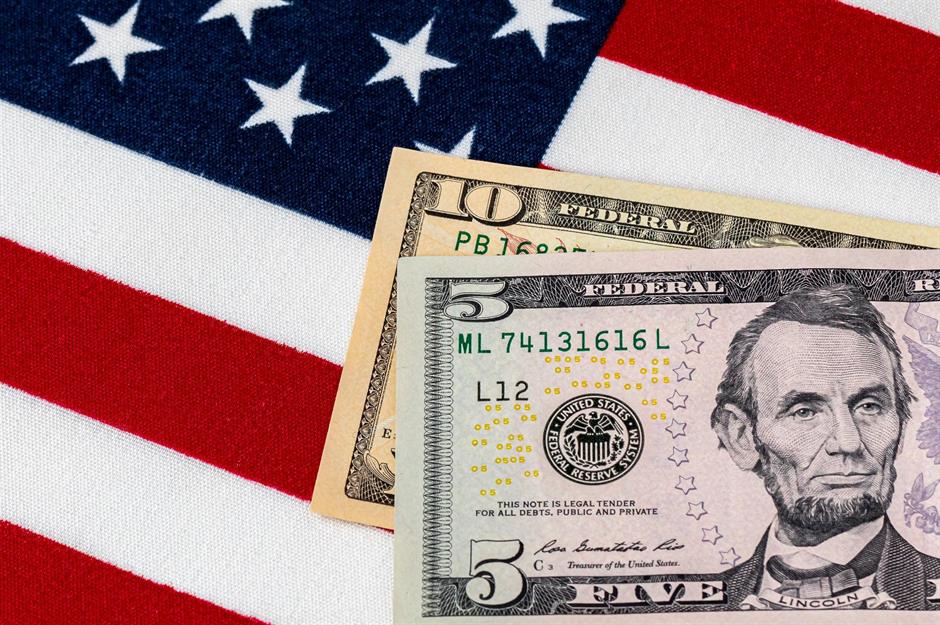
The federal minimum wage hasn't changed since 2009 when it increased from $6.55 to $7.25. If it had increased in line with inflation, most Americans would be earning a minimum of $10.67 per hour. Had it increased in line with productivity, every working American would be earning a minimum of $20 an hour.
More than 20 states have raised their minimum wage for 2025, and 10 have a minimum wage of at least $15 per hour. Other legislatures are tying it to inflation, meaning workers across the country are guaranteed to bring home higher pay each and every year. Meanwhile, five US states don't offer a minimum wage at all...
Read on to find out the minimum wage in every state as of 2025.
Louisiana: no minimum wage
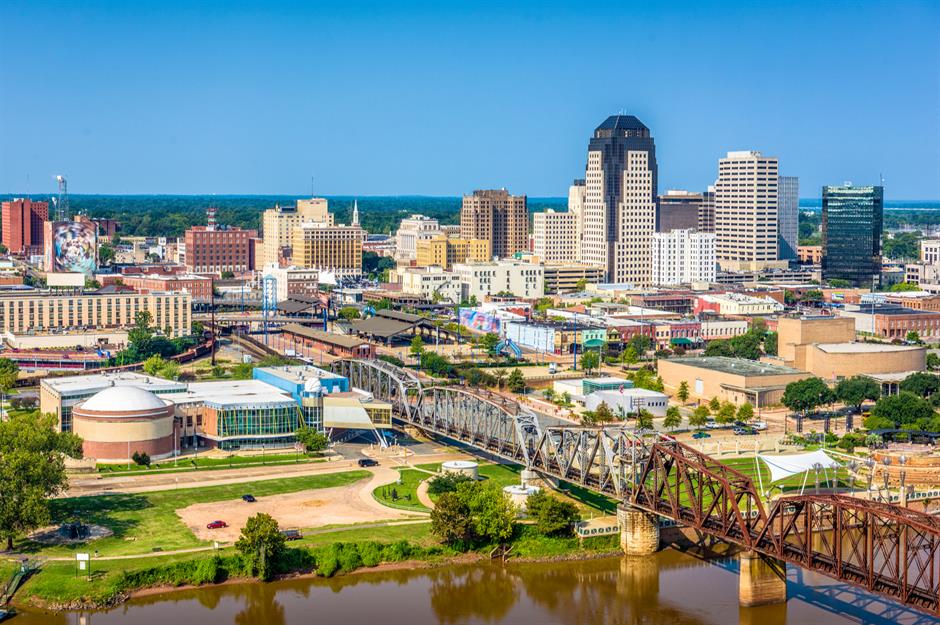
Louisiana is one of the five states that doesn't have a minimum wage law in place, meaning the federal minimum of $7.25 applies to all non-tipped workers while tipped workers receive just $2.13 an hour. Despite growing pressure from underpaid workers, who have successfully campaigned for raises in other parts of the country, there are no plans to change this in 2025.
It's much better news in New Orleans though, where the City Council has introduced a minimum wage for city employees of $15.56 an hour.
Mississippi: no minimum wage

Mississippi is the most impoverished state in the US, with a poverty rate of 18% according to the US Census Bureau. It's also the last state to adopt an equal pay law to ensure that workers doing the same job receive the same pay, regardless of their gender – something legislators only enacted in July 2022.
Like Louisiana, Mississippi defaults to the federal minimum wage of $7.25 an hour, without imposing a minimum wage of its own.
Alabama: no minimum wage
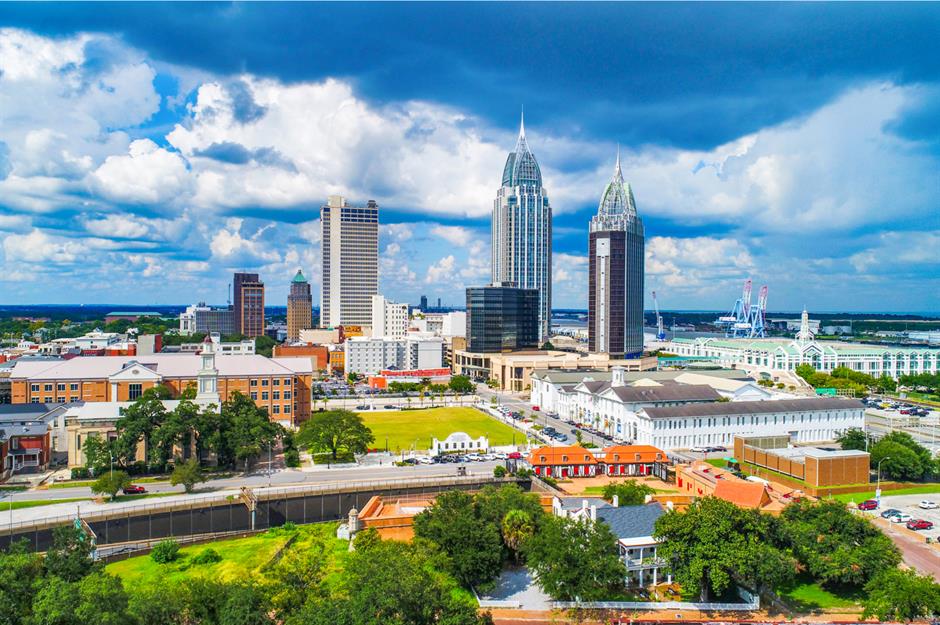
Alabama is another southern state with no minimum wage, and no plans to change it.
In fact, legislators have even been actively preventing individual jurisdictions from creating their own rates, a decision it made after Birmingham voted in favor of a $10.10 hourly wage in 2015. The state has upheld this rule despite legal challenges from workers.
South Carolina: no minimum wage
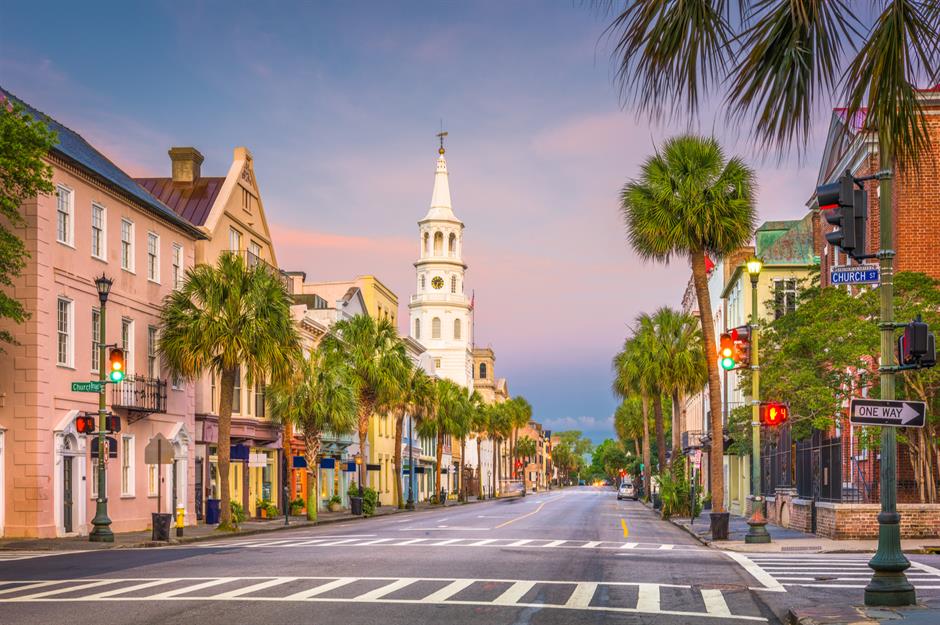
The minimum wage in South Carolina has reflected the federal rate of $7.25 since 2009. Nationwide, campaigners have been pushing for $15 an hour since 2012 as part of a national movement called "Fight for $15."
In summer 2021, workers at fast food chains around Charleston – including McDonald’s, Burger King, and Wendy’s – went on strike but to no avail. Around 4.4% of South Carolina's hourly workforce is paid minimum wage or lower, which is higher than the national average of 1.1%, and they won't see a pay raise in 2025.
Tennessee: no minimum wage

Likewise, workers in Tennessee make the default federal minimum of $7.25, and the state has a higher than average poverty rate at 14%. In addition, it's estimated that nearly half of working families in Tennessee are unable to pay for their basic needs even if their income is above the poverty level.
Several attempts have been made to increase the minimum wage, including the Tennessee Minimum Wage Act, which aimed to require a minimum of $12 an hour but was axed in May 2021. A bill to raise the minimum wage to $20 never made it out of committee in 2024.
New Hampshire: no minimum wage

New Hampshire eliminated its state minimum wage in 2011, making it the only New England state relying on the federal rate of $7.25.
A house bill to raise the state's minimum wage to $17 an hour by 2029 failed in 2024, so it looks like very little will change for low-wage workers in the Granite State in 2025.
Georgia: $5.15

One of just two states where the minimum wage is below the federal rate, Georgia has been clinging on to its $5.15 hourly rate since 2001 and has no plans to raise it in line with the national trend. For most workers, however, the $7.25 federal minimum wage applies. The only employees that can earn less than this are those who aren't covered by the Fair Labor Standards Act (FLSA).
In Savannah, meanwhile, the 2022 budget increased the minimum wage to $15 for hourly city employees.
Wyoming: $5.15
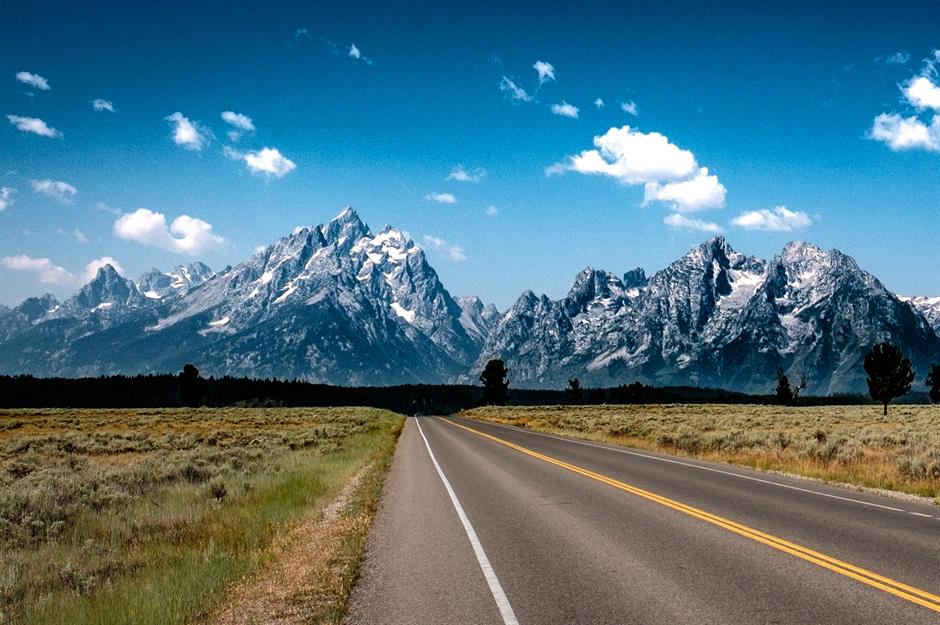
Joining Georgia with the lowest minimum wage in the country is Wyoming, where employees who aren't protected by the FLSA can earn just $5.15 an hour. Wyoming also has the biggest gender wage gap in the country, with women earning just 75 cents for every $1 earned by a man.
In early 2021, a bill to raise the wage to $15 an hour was proposed but failed to generate support. The state has declined to increase its minimum wage for 2025.
Texas: $7.25

Texas is one of 12 states that imposes the federal minimum wage of $7.25 across the board (with the exception of tipped employees who, as we mentioned earlier, are guaranteed just $2.13 an hour). Like the previous states in our round-up, Texas won't be raising its minimum wage in 2025.
This is despite the fact that, according to the Massachusetts Institute of Technology (MIT) Living Wage Calculator, a single adult with no children would have to earn nearly $21 per hour to make a living wage in Texas. This figure accounts for the cost of food, housing, transportation, and other necessities.
Oklahoma: $7.25

Oklahoma will maintain the federal minimum wage of $7.25 in 2025, having declined to change it since 2008. In July 2019, each of Oklahoma’s five members of the US House of Representatives voted against raising the federal minimum wage to $15 an hour by 2025.
In December 2020, Senator George Young filed a bill that would require employers either to increase their hourly minimum wage to $10.50 or match the federal minimum wage (whichever figure was the greater of the two). While the bill failed, it's being revived by Senator Nikki Nice for 2025, who hopes to raise the hourly wage to $13 an hour with increases of $0.50 per year for five years after the effective date.
Kansas: $7.25

Kansas has also declined to raise its minimum wage in 2025 and will keep the federal minimum of $7.25.
There are some notable exceptions, however. For example, Overland Park established a $15-per-hour minimum for city employees in October 2023.
North Carolina: $7.25

North Carolina also has the federal rate of $7.25, which won't change in 2025.
This is despite the fact that the current living wage in North Carolina ranges from $21.56 an hour for a single adult with no children to $28.50 for a family of five. As much as 28% of the workforce in North Carolina makes less than $17 per hour, with Black and Hispanic workers disproportionately affected.
Utah: $7.25

Utah also implements the federal minimum wage of $7.25, which is less than half of the state's lowest estimated living wage of $22.52.
As in North Carolina, a higher than average number of workers are making less than $17 per hour. While state congressman Brett Garner hoped to change that by introducing a house bill in 2024 to increase the minimum wage starting in 2025, it didn't even make it to the committee reading stage.
Kentucky: $7.25

Despite having the fifth-highest child poverty rate in America, Kentucky is sticking with the current federal minimum wage in 2025.
Democrat Reggie Thomas has repeatedly tried to increase the minimum wage, introducing bills into the state senate more than five times in recent years. However, his proposal to raise the wage incrementally to $15 an hour by 2026 has fallen flat every time. Nevertheless, he's trying again in 2025.
Iowa: $7.25

The minimum wage has stayed at $7.25 for more than a decade in Iowa. If a working single parent earns that amount, the family is below the official poverty line.
It's been predicted that nearly 400,000 people across Iowa would benefit from an increase to $17 an hour – roughly a quarter of the state's workforce. That won't happen in 2025, but one representative hopes to make progress at least. Ken Croken has filed a bill to raise the minimum wage to $10.85 an hour this July, $13 an hour in 2026, and finally $15 an hour in the summer of 2027. Watch this space...
Indiana: $7.25
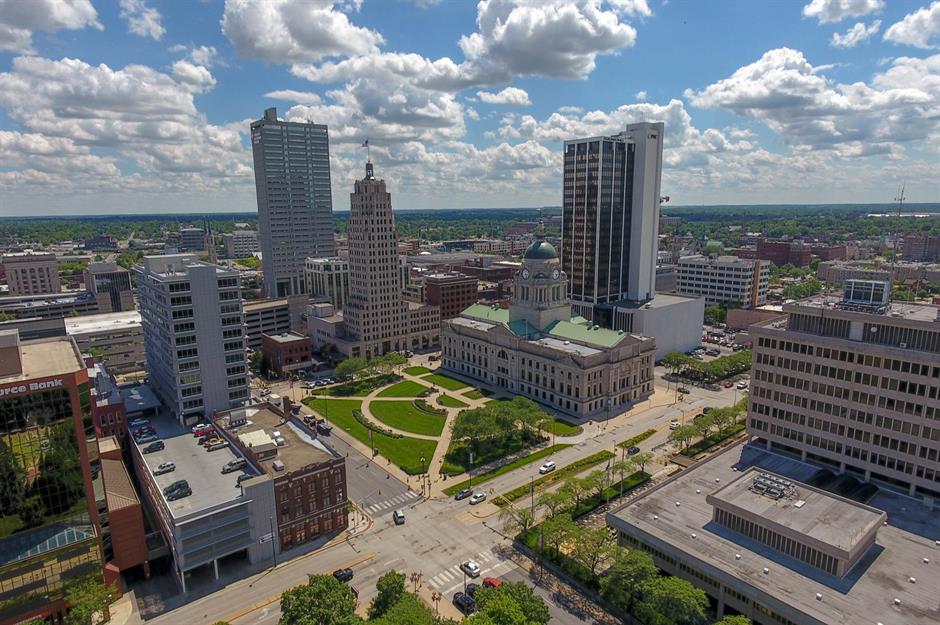
Yet another state refusing to increase its $7.25 minimum wage is Indiana, despite the fact that workers need to earn at least $22 an hour just to afford rent on a two-bedroom apartment, according to a report released in late 2024.
Lawmakers killed a bill to incrementally raise the minimum wage in April 2024, and there are apparently no plans to counter this in 2025.
Pennsylvania: $7.25

Unlike many of its neighboring states, Pennsylvania is sticking with the federal minimum wage of $7.25. Around 68,000 workers in the state earned the minimum wage or less in 2023. Another 800,000 earned less than $15 an hour.
Governor Josh Shapiro urged state legislators to more than double the rate to $15 in 2024, and a bill passed in the house but died in the senate. Pennsylvania Democrats have promised the issue will be on their agenda again this year.
Idaho: $7.25

There is also no change in Idaho – though it's not for lack of trying. A bill introduced to the senate in January 2021 would have increased the minimum wage from the federal limit of $7.25 to $15 by July 2023. However, it received very little traction.
At the time, Governor Brad Little didn't support the increase out of concern there might be job losses, pointing out that only 1% of Idaho's workers earn the minimum wage. The median hourly wage in Idaho was $21.27 per hour in 2023, which is slightly below the national average of $23.
North Dakota: $7.25

Unlike its neighbors, North Dakota is yet to increase the minimum wage above the federal rate. An attempt to boost it to $9 an hour from August 2022 failed in the house in February 2023. One lawmaker suggested a ballot initiative would be more successful for the state, but nothing has yet been pursued.
The Peace Garden State also followed in Alabama's footsteps by forbidding cities from adopting their own minimum wages.
Wisconsin: $7.25

Although it has the same rate as the federal minimum wage, Wisconsin does have some protections in place that aren't seen in other low-wage states. Agricultural and farm employees, who are usually exempt from the federal rate, are guaranteed $7.25 an hour, while camp counselors are eligible for special minimum pay rates of up to $350 per week.
Governor Tony Evers has proposed raising the minimum wage to $10.25 by 2026, but nothing will change in 2025.
West Virginia: $8.75

As of 2016, the minimum wage in West Virginia has been $8.75 an hour and this is being maintained in 2025.
While it's higher than the federal rate, it's still more than $10 less per hour than what a single worker without children needs to earn a living wage, according to MIT.
Montana: $10.55, up from $10.30

Montana is one of several states that tie the minimum wage to the Consumer Price Index (CPI). Every year, by September 30, the wage is adjusted for any recent increases in the costs of living and kicks in at the start of the following year. In 2023 it saw a substantial jump from $8.75 to $9.95, though increases haven't been so large in the last two years.
In January 2025, the state minimum wage was raised to $10.55 per hour.
Ohio: $10.70, up from $10.45

On January 1, 2025, Ohio increased its minimum wage to $10.70 an hour in line with current inflation.
However, this doesn't apply to all workers across the state. Workers under 16 years of age are only entitled to the federal minimum of $7.25 an hour. Similarly, if an employer's gross income is less than $394,000, the federal minimum also applies.
A campaign group had hoped to introduce a ballot measure for November 2024 that would see a minimum wage of $15 for the state, but failed to get enough signatures in time.
Arkansas: $11

Arkansas was another one of 20 states that increased its minimum wage on January 1, 2021, but it has no plans for further increases. Instead, Arkansas is keeping its current rate of $11 an hour for non-tipped employees in 2025.
While these wages are considerably better than the wages offered by several neighboring states, money may still be tight for many workers. The living wage in Arkansas is $19.10 for a single adult with no children, more than $8 higher than the minimum wage.
Minnesota: $11.13, up from $10.85

Minnesota also raised its minimum wage in 2025, increasing it from $10.85 to $11.13 per hour. However, employers are allowed to pay a 90-day training wage of $9.08 an hour for anyone under the age of 20.
Separately, in Minneapolis the minimum wage increased to $15.97 on January 1, 2025. It's the same for larger businesses in neighboring St. Paul, but with exceptions for smaller employers. For businesses with 100 or fewer employees, for example, the rate has increased to $15.00 per hour. Meanwhile, businesses with five or fewer employees have seen the minimum wage increase to $13.25 per hour.
South Dakota: $11.50, up from $11.20

South Dakota's lower-wage workers got a 30-cent raise starting on January 1. Just like in neighboring Montana, the increases are tied to the CPI following a successful ballot measure in 2014.
Increases are also applied to tipped employees, with the hourly minimum of $5.75 effective at the start of 2025. This is half the minimum wage for non-tipped employees, and wages and tips combined must at least equal the minimum wage.
Alaska: $11.91, up from $11.73

Alaska's minimum wage increased from $11.73 to $11.91 at the start of the year. While this is higher than the minimum wage in many other states, it certainly doesn't do much to offset Alaska's notoriously high living costs. An adult without any children needs to make at least $23.26 per hour for a living wage, and this figure jumps to nearly $45 for households with two working adults and two children.
Voters passed a ballot initiative in November 2024 to raise the minimum wage to $15 per hour by 2027 and offer one paid hour of sick leave for every 30 hours worked by an employee. As part of the measure, the minimum wage will increase twice in 2025. On July 1, it will rise to $13 per hour.
New Mexico: $12

New Mexico’s minimum wage teetered at just 25 cents above the federal rate for a decade – but there have been big changes in the last couple of years.
In 2020 a new rate of $9.00 was introduced and it's been steadily increasing ever since. What's more, several cities have set their minimum wages even higher. In Santa Fe, for example, the lowest-paid workers take home $14.60 per hour.
However, for 2025, workers paid the state minimum will not see an increase.
Nevada: $12

Minimum wage in Nevada increased to $12 on July 1, 2024, thanks to a law passed in 2019 that gradually raised the rate from $8.25 per hour without healthcare benefits. This won't increase in 2025.
While $12 is higher than what is mandated by most states, a single adult without children still needs at least another $10 per hour to earn a state living wage of $22.46.
Virginia: $12.41, up from $12

Virginia followed the federal minimum wage until 2021. It then saw the largest minimum wage increase of all 50 states when it raised base hourly pay to $9.50 in May that year. This has been swiftly followed by more raises through January 1 this year when it went to $12.41.
The rate will be adjusted each year in line with the CPI. However, a bill to raise the minimum wage to $13.50 per hour by January 2026 and $15 by January 2027 is being considered by the House Appropriations Committee.
Michigan: $12.48, up from $10.56

Similarly, Michigan's minimum wage increased from $10.33 in 2024 to $10.56 in January. The rate for workers aged 16-17 increased to $8.98 per hour. However, this changed again in February. The minimum jumped to $12.48 per hour and the rate for minors is now $10.61.
In 2018, a ballot initiative was proposed to raise the minimum wage to $12 by 2022, but before the voters could have their say, the leglisature "adopted" the measure and attempted to pass a weaker version. Tied up in lawsuits ever since, the Michigan Supreme Court ruled in favor of the measure in July 2024 with the changes taking effect this year.
Nebraska: $13.50, up from $12
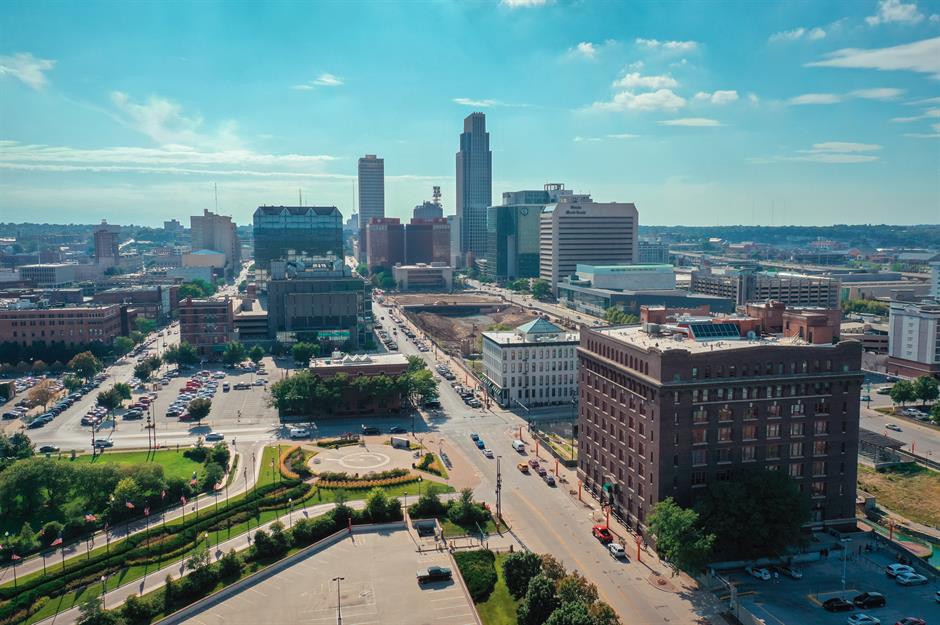
In November 2022, Nebraskan voters approved a measure to increase the minimum wage from $9 to $15 by 2026. It's one of several states that have chosen to gradually increase it over the next few years.
On January 1, 2025, the minimum wage increased to $13.50, with an increase to $15 in 2026. After this, it will rise with inflation.
Missouri: $13.75, up from $12.30

On January 1, 2025, the minimum wage in Missouri increased from $12.30 to $13.75 thanks to a ballot measure last November. Initially, the rate was set to be tied to the CPI and increase from $12.30 to $12.65. The ballot measure called for increasing the state's minimum wage to $15 an hour on January 1, 2026, with a jump to $13.75 in the interim. It also created a new rule that employees should earn an hour of paid sick leave for every 30 hours worked as of May 1, 2025.
Businesses are attempting to overturn the measure, stating that propositions can only have one subject, and in this case there are two (wages and sick pay). However, the law remains in effect for now.
Hawaii: $14

At present, Hawaii’s minimum wage is $14 an hour and will not increase in 2025.
Although the state made history by passing legislation to gradually raise the minimum wage to $18 an hour by 2028, this won't come close to meeting the island's living wage, which currently stands at a huge $27.33 an hour for a single adult with no children.
According to World Population Review, Hawaii continues to be the most expensive US state to live in.
Florida: $14, up from $13

Florida will increase its minimum wage from the current rate of $13 to $14, but not until September 30, 2025.
In 2020, voters approved an amendment that adds a dollar to the hourly minimum wage each year until it hits $15 in 2026. Previously, it had increased the minimum wage every year or so, but never by as much as the increases enshrined in the new amendment.
Vermont: $14.01, up from $13.67

As of January 1, 2025, the minimum wage in Vermont increased from $13.67 an hour to $14.01. Tipped employees also received a raise, as they are entitled to 50% of the non-tipped minimum wage.
Unlike other states, Vermont hasn't passed a bill to raise the minimum wage to $15 by a certain year. The increases over the last few years were approved back in 2019, but from 2023 onwards, the annual adjustments are determined by the CPI only.
Maine: $14.65, up from $14.15
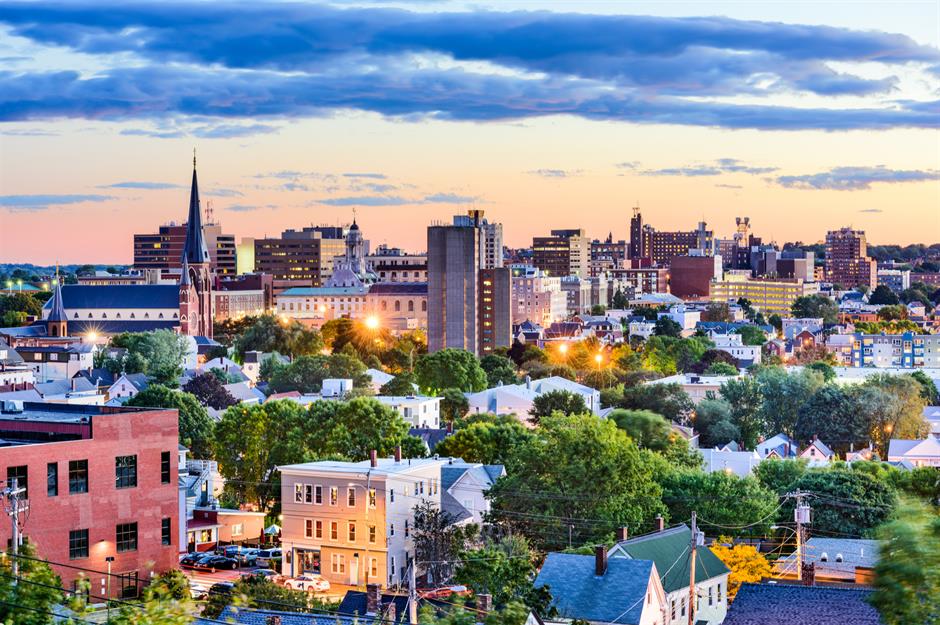
Maine approved a motion to increase its minimum wage in line with the cost of living back in 2016. Its lowest-paid workers made $7.50 per hour at the time and this has since increased by more than $7 to hit $14.65 in 2025.
Meanwhile, the minimum wage for tipped employees rose from $7.08 to $7.33 an hour, as of January 1.
Oregon: $14.70, up from $14.20

Where you work in Oregon will dictate the minimum hourly rate an employer needs to pay you, with increases set to take effect in July.
Through June 30, 2025, the standard state minimum wage is $14.70, up from $14.20. However, employers in the Portland metropolitan area need to pay a minimum hourly wage of $15.95.
Meanwhile, 18 non-urban counties in the south and west of the state have their own minimum wage of $13.70 an hour.
Arizona: $14.70, up from $14.35

Another state where the minimum wage is tied to inflation, Arizona increased its minimum wage from $14.35 to $14.70 on January 1, 2025. That's more than double the federal minimum wage.
Tipped employees are guaranteed no less than $3 below the non-tipped wage, which works out to a minimum hourly wage of $11.70 as of January 1. A November ballot amendment would have reduced the difference to as much as 25%, but it was rejected by voters.
Colorado: $14.81, up from $14.42

Since 2020, the minimum wage in Colorado has been tied to the cost of living as measured by the CPI and adjusted annually. On January 1, it increased to $14.81.
However, residents of Denver already passed the $15 milestone on New Year's Day 2022, when the city's minimum wage increased from $14.77 to $15.87. And it continues to increase each year; as of January 1, 2025, workers are guaranteed a minimum wage of $18.81 per hour in Denver.
Massachusetts: $15

Massachusetts is one of few states to have reached the $15-an-hour minimum, but it's also one of the most expensive parts of the country (a living wage of $27.89 per hour is needed for a single adult with no children).
While state law had enshrined a five-year schedule for increasing the minimum wage, it ended in 2023 and any further changes must be made by law, either through legislature or a ballot measure. In 2025, Massachusetts' minimum wage will not increase.
Maryland: $15
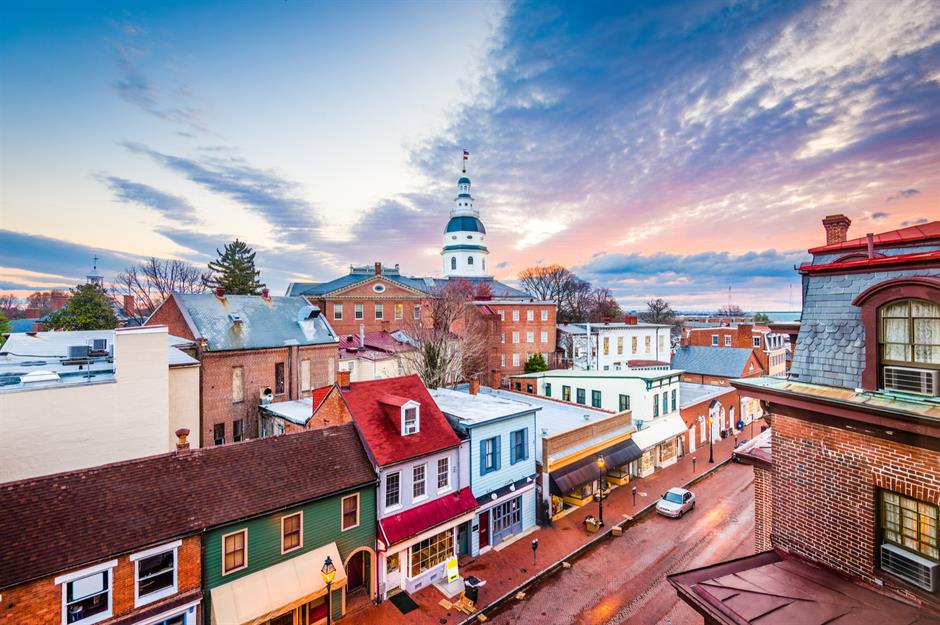
Maryland had a plan to raise the minimum wage to $15 an hour by 2025, but lawmakers apparently couldn't wait. They passed a new bill that introduced the $15 minimum in January 2024 instead.
While the rate will remain the same for 2025, two lawmakers have proposed increasing it to $20 per hour over the next two years.
Delaware: $15, up from $13.25
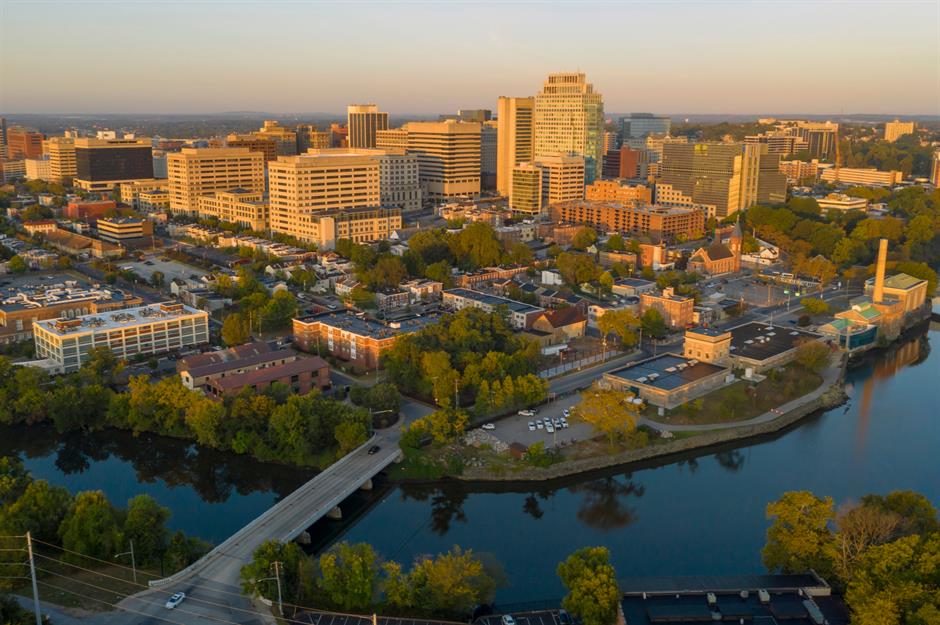
The minimum wage in Delaware is $15 as of January 1, 2025, an increase of $1.75 from 2024.
Back in June 2021, Governor John Carney signed a law mandating a $15 minimum wage by 2025. On January 1, 2022, the minimum started at $10.50 with increases kicking in on the first of each year. There are exceptions, though, and tipped workers still have a minimum of only $2.23 per hour.
Illinois: $15, up from $14

Part of its plan to introduce a $15 hourly minimum wage by 2025, Illinois has been increasing the minimum wage by $1 every year. As of January 1, non-tipped employees now earn at least $15 an hour – though workers in Chicago are steps ahead and earn $16.20 an hour.
Meanwhile, tipped workers in Chicago are guaranteed at least $11.02 an hour, well above what many minimum wage earners make across the country.
Rhode Island: $15, up from $14

As with other states, Rhode Island enacted a plan to increase the minimum wage to $15 by 2025 through a law signed by Governor Dan McKee on May 20, 2021.
The state’s lowest paid, untipped workers now make $15 an hour. The tipped minimum wage, however, has stayed at $3.98 per hour. Though employers are required to cover the difference if tips don’t add up to $15 per hour, advocates say this doesn't always happen and are pushing for an increase.
New Jersey: $15.49, up from $15.13

As of January 1, 2024, New Jersey met the $15 threshold for its minimum wage after several years of steady increases. Now the rate is tied to inflation, and in 2025 it increased to $15.49 per hour.
There are exemptions for seasonal and small employers, who have until 2026 to reach the $15 target. These businesses must pay an increased minimum wage of $14.53 from January 1, up from the previous figure of $13.73.
New York: $15.50, up from $14.20

In the state of New York, the minimum wage went up to $15.50 per hour from $15 as of January 1. But the rules are different in New York City, Long Island, and Westchester County, where the minimum wage increased an additional $1 per hour to $16.50.
Governor Kathy Hochul enacted new increases of $0.50 per hour for 2025, as well as 2026. From 2027, the state's minimum wage will increase annually in line with the CPI.
Connecticut: $16.35, up from $15.69

The situation in Connecticut is similar to that in New Jersey. In June 2023, the minimum wage increased to $15 after several years of steady increases and is now tied to the CPI.
As of New Year’s Day, the minimum wage is $16.35, up from $15.69 an hour. This means Connecticut's lowest-paid workers are guaranteed to make double the federal minimum wage of $7.25 that's adopted by so many states across America.
California: $16.50, up from $16

The state with the second highest minimum wage is California. Back in 2016, the state decided to raise its minimum wage to $15 by 2022, and it's continued to increase this every year, with $16.50 the new rate as of January 1.
Some jurisdictions are going even further. For 2025, Sunnyvale raised its minimum wage to $19, while West Hollywood boosted its rate to $19.65. In fact, there are 40 cities and towns in California that already have minimum wages that are higher than the state's mandated rate of $16.50.
Washington: $16.66, up from $16.28

Washington increased its minimum wage from $16.28 to $16.66 on New Year's Day, the highest of all states. On top of that, Seattle-based employers are required to pay an even more generous $20.76 per hour minimum.
Meanwhile, workers in SeaTac got a $1 bump from $19.71 per hour to $20.71 at the start of the year. That said, in the Seattle-Tacoma-Bellevue area the living wage for a single adult without children is $28.70 – meaning even the highest minimum wage in America falls short of what's needed to provide a comfortable standard of living.
Now discover the average salary in every state
Comments
Be the first to comment
Do you want to comment on this article? You need to be signed in for this feature